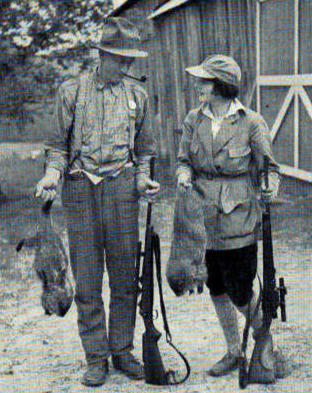one of us

| Yama, may I recommend that you go to www.huntingnut.com and download the (free) Pointblank program. It will answer these kind of questions for you. PS, I've never seen a coyote with a 12" kill zone..... Maybe 8 on a big one. HTH, Dutch. |
| | | Posts: 4564 | Location: Idaho Falls, ID, USA | Registered: 21 September 2000 |   IP
IP
|
|
one of us
| We do get some big dogs up here; I have measured some to compare with the tables provided by Kahles and Swarovski. FMJ bullets don't tear holes in the pelt. Regardless of the ammo I've used, I haven't lost one that I've hit, yet. Thanks for the tip on the site! |
| | | Posts: 108 | Location: corner of walk and don't walk | Registered: 31 December 2003 |   IP
IP
|
|
one of us
| What's the best trajectory for the .223 with the Federal 55 gr. FMJ load? I use a Swarovski with the TDS reticle. TD recommends +1.3"@100 yds. Opinions? |
| | | Posts: 108 | Location: corner of walk and don't walk | Registered: 31 December 2003 |   IP
IP
|
|
one of us
| What is your velocity?
BC of that bullet?
Height of scope over bore?
What size is your "point blank" target?
Jim |
| | | Posts: 209 | Location: Heart of the Bluegrass, KY | Registered: 19 September 2002 |   IP
IP
|
|
one of us
| Well, that's why I mentioned that I was using the TDS reticle. A .223 isn't suitable for much other than coyotes in this part of the world, so about a 10-12" kill zone. Federal claims the load is going 3240 fps @ muzzle, zeroed @ 200 yds. it drops about 6.2" @ 300 yds., but I've run into misprints in the TDS data before. |
| | | Posts: 108 | Location: corner of walk and don't walk | Registered: 31 December 2003 |   IP
IP
|
|
one of us
| Here is the data for a 10" killzone. Hope it helps.  |
| | | Posts: 209 | Location: Heart of the Bluegrass, KY | Registered: 19 September 2002 |   IP
IP
|
|
one of us
| U have to be careful with the max. point blank range system. When i adopt it (which i do all the time), i use it very conservatively. Assuming the coyote's broadside vital area is actually 10", sighting in so the max. ordinate is 5" is a little too high in a realistic hunting scenario. Assuming (again) that's at 300 yds. or so (whatever the rangeis from the ballistics program), the hypothetical 10" vital area will be overshot some, and if u're trying to shoot off hand, a little shake here and there will definitely produce some high misses. I usually employ at the most a sight-in distance that allows for a max. ordinate of about 1/2 the distance, and certainly no more than 3/4ths the height above a center hold on the chest. So for a 10" coyote (an awful big one relative to the many measurements i've made on avg. 25 lbers in my area), that would amount to a max. ordinate of 3.75". At least that's my system that's been working good for me. I've even seen a MPBR suggested for the actual size of the target in print before.
When i establish the MPBR system, i also put the 2nd focal plane reticle to work for me to adopt a MPBR ranging magnification such that the ballistic reticle also doubles as a ranging tool as well. I use 3-4" for my MPBR ranging system for coyotes, and at whatever range the bullet drops 1.5-2" below line of sight is the range at which i calculate my magnification for a 1 or 2 stadia (or even plex) ranging "gap" for a 10 or 12" coyote back-brisket (hair on) AT TYPICAL LOW POWER CALLING/HUNTING MAGNIFICATIONS. This way if i encounter a coyote in a calling scenario or stumble upon one, i can use it quickly to tell if he's within my MPBR or not by "bracketing" him From a rested position obviously. If he fits the calculated bracketing gap or is bigger aim dead center and shoot. |
| | | Posts: 926 | Location: pueblo.co | Registered: 03 December 2002 |   IP
IP
|
|


 The Accurate Reloading Forums
The Accurate Reloading Forums  THE ACCURATE RELOADING.COM FORUMS
THE ACCURATE RELOADING.COM FORUMS  Hunting
Hunting  Varmint Hunting
Varmint Hunting  Re: .223 Rem. max. point blank?
Re: .223 Rem. max. point blank?







 The Accurate Reloading Forums
The Accurate Reloading Forums  THE ACCURATE RELOADING.COM FORUMS
THE ACCURATE RELOADING.COM FORUMS  Hunting
Hunting  Varmint Hunting
Varmint Hunting  Re: .223 Rem. max. point blank?
Re: .223 Rem. max. point blank?

